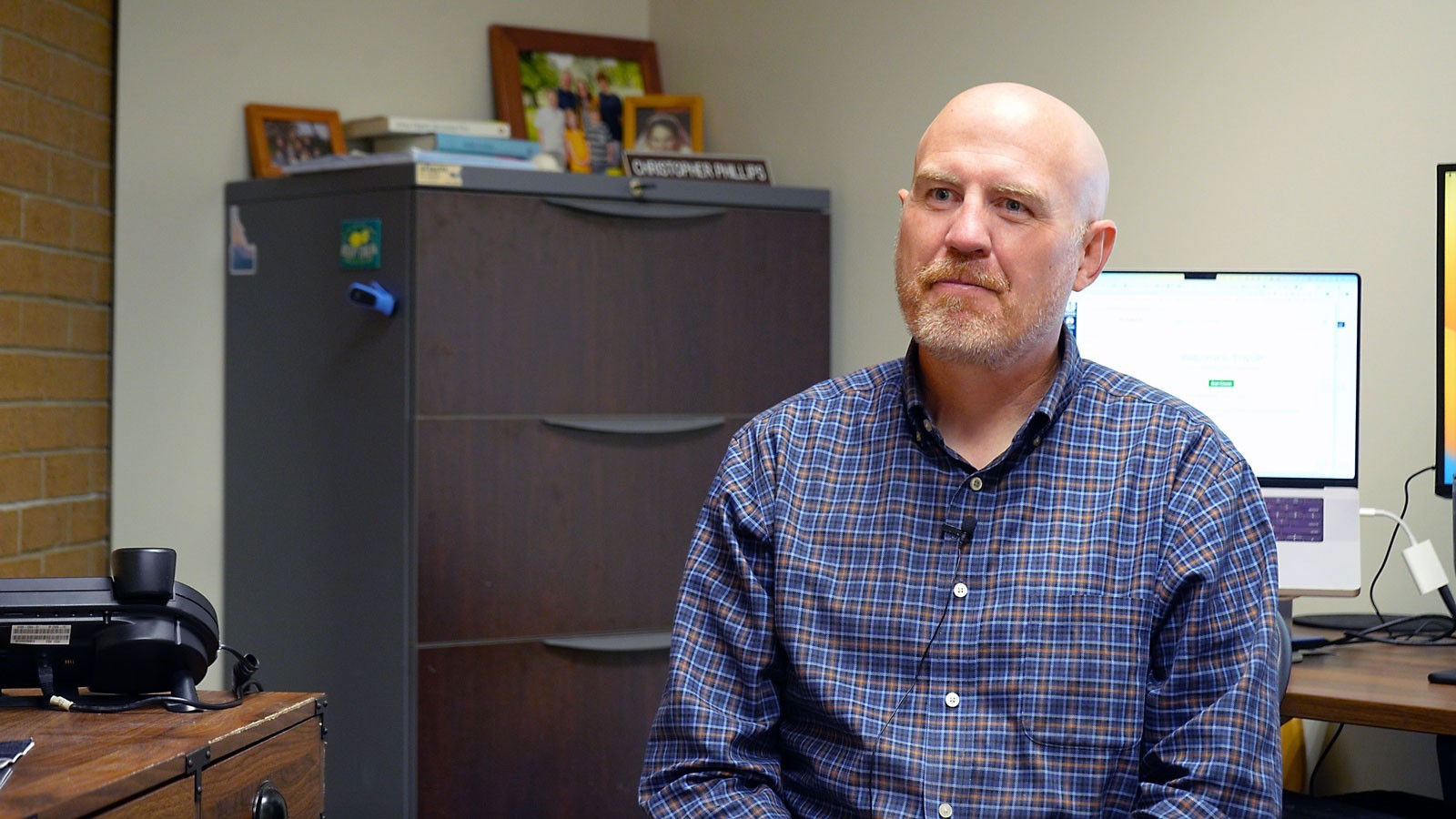Institutions Nationwide Mark Accessibility Progress, Thanks to USU's WebAIM
By JoLynne Lyon |
Christopher Phillips speaks about IDRPP's WebAIM initiative.
Utah State University is more accessible to students with disabilities, thanks to a course and a web accessibility evaluation tool from the Institute for Disability Research, Policy & Practice. It’s also thanks to the efforts of USU’s Digital Accessibility Services Group, and to people from every corner of every USU campus statewide.
IDRPP’s WebAIM initiative offers an online digital documents course. Its purpose: help enrollees ensure that documents shared via email or the web are accessible. USU uses WebAIM’s Document Accessibility Online Course. So do 476 other institutions of higher learning around the nation, including all the universities in the Utah System of Higher Education. Nationwide, just over 19 percent of the Department of Education’s accredited institutions have taken advantage of the training.
Course participants learn a number of skills, including adding accurate alternate text to images, using headings correctly, and structuring information so that it follows a logical, intuitive flow. All of these practices help people with disabilities find the information they need.
The online course is just one example of how USU has beefed up accessibility in campus learning materials.
“Prior to COVID, accessibility was certainly on the radar,” said Christopher Phillips, digital accessibility officer in USU’s Digital Accessibility Services Group. “We were doing a lot of work around establishing policy and doing awareness. And as difficult and as hard as COVID was, and with all of the challenges that came with it, it ended up being a pretty big opportunity from an accessibility perspective. … In so many classrooms, it was on the radar of so many more students, so many more teachers.”
In a face-to-face classroom, students and teachers might have worked through accessibility issues on their own. But when all instruction moved online, Phillips said, things changed: “People were just knocking down our door to get access to training and information on how they could make sure that their content and instruction was usable and inclusive for all students.”
Video has long been a part of instruction, but the push to make it accessible is relatively new.
“Captions on videos are obviously essential for someone who is deaf or hard of hearing,” Phillips said. “But they offer so many benefits to so many people. Whether you're listening to a video in a noisy environment, or maybe you forgot your headphones, or maybe you're an English language learner, captions are just helpful to almost everyone in one context or another.
Last year, a new Utah State University went into effect requiring captions on all new videos, Phillips said.
“Campuses just across the board responded in an incredible way,” Phillips said. “A big part of that challenge was just looking at identifying video content across campus.”
For example, there were more than 100 different YouTube channels across different departments, administered by different people.
“Across the board, once we just have a chance to visit with someone and explain what captions are and why they're important, everyone's been able to get on board in doing that work.”
In the last year, videos that were posted at USU were at 100 percent “rolling compliance,” meaning that if they needed accessibility tweaks, those changes were made in a timely manner. Older videos are also being brought into compliance; most of them are now captioned.
In addition to providing the digital documents course, a tool developed by WebAIM in collaboration with Pope Tech has made it possible for USU — and many other businesses and institutions of higher learning — to receive site-wide evaluations.
In addition to USU, 104 other colleges and universities have used this platform for testing their websites' accessibility. In this way they are able to identify problems across an entire website. Based on WebAIM’s WAVE tool, the platform allows an entity to scan multiple pages. (The WAVE tool is free for everyone, and it allows users to scan any one page for accessibility errors. While not all accessibility issues can be detected in an automated scan, WAVE results are an indicator of how seriously an entity takes accessibility.)
Taken together, the many facets of accessibility can be intimidating, Phillips said.
“It can feel a little bit overwhelming at times,” Phillips said. “Our biggest thing would just be to say, don't be overwhelmed. And please reach out for help. We do have so many resources that are available.”
For more information, contact Jared Smith of WebAIM or USU’s Digital Accessibility Services.
WRITER
JoLynne Lyon
Public Relations Specialist
Institute for Disability Research, Policy & Practice
435-797-7412
jolynne.lyon@usu.edu
CONTACT
Jared Smith
Director, WebAIM
Institute for Disability Research, Policy & Practice
435-797-7024
j.smith@usu.edu
Christopher Phillips
Electronic and Information Technology Accessibility Coordinator
Disability Resource Center
(435) 797-5535
christopher.phillips@usu.edu
TOPICS
Inclusive Excellence 270stories Technology 157stories Disabilities 82stories Access 73storiesComments and questions regarding this article may be directed to the contact person listed on this page.







